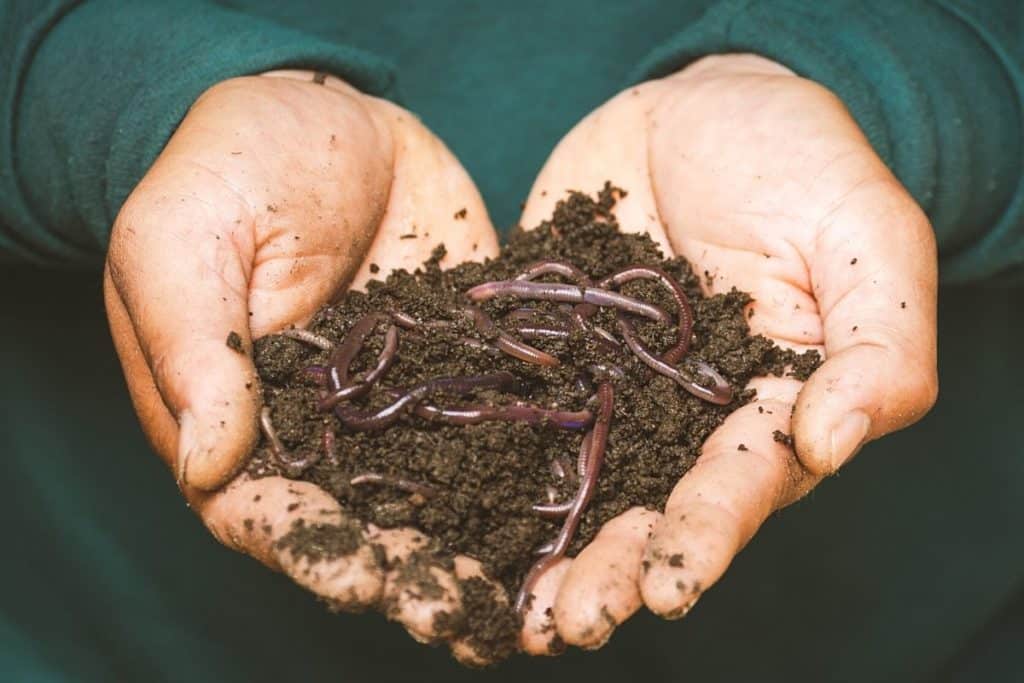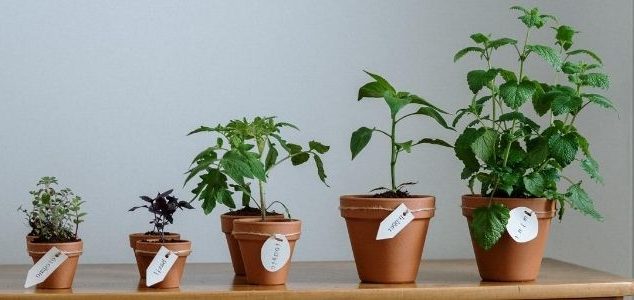
Earthworms and plants have been living close together for a very long time. However, should you put earthworms in your potted plants? Will earthworms be harmful or helpful for your house plants?
It can be beneficial for potted plants to put a couple of earthworms in their soil because the worm castings contain nutrients for the plants. Besides, earthworms will improve the aeration of the soil. You should only use regular earthworms for your potted plants.
Don't you want to put in all the effort of looking for earthworms and then putting them in the soil of your potted plants? You can just get worm castings and give them to your plants, they will love it! The worm castings can be bought from Etsy, click here to check it out!
Contents
Why it Can be Good To Put Earthworms in Potted Plants
To understand why earthworms can be good for your potted plants, you must realize that earthworms and plants have lived together and evolved for over more than 100 million years. Since then they have adapted to each other in a way that is beneficial for both.
Earthworms will not eat roots or other living animals but will only ingest organic matter that has microorganisms on it and digest these organisms to survive and live.
After digestion of this particular organic matter, the earthworms will poop out the rest of the organic matter which will be rich in nitrogen, minerals, and enzymes. The castings of the earthworms will improve the quality of the soil.

Image by: Benketaro
Another reason why earthworms can be beneficial for plants is that they aerate the soil. Because they make tunnels in the soil, the soil will be richer in oxygen, water, and the soil will be mixed. Also because of the tunnels in the soil, the plant roots can grow easier through the soil.
Also, if there is somehow no organic matter in your plants' soil, earthworms will be still able to survive. Plants excrete sugars from their roots into the soil to feed the bacteria that help the plant make nutrients. These bacteria are the ones that earthworms love to eat and that is why they will never starve around a plant.
Earthworms placed in potted plants generally benefit the soil and the plant as long as there is the presence of decaying materials that the worms can eat. But there can also be disadvantages of adding worms to your potted plants, explained below.
What are the Cons of Adding Earthworms in Potted Plants?
Regardless of what type of worm you want to put in your potted plant, their castings will always benefit the soil. Thus, it also gives positive effects on the plants within that soil. However, adding earthworms to your houseplants pots can become messy when you don't know what you are doing.
These are the cons of adding earthworms in potted plants:
- Some kinds of worms can reproduce fast which can lead to overpopulation (and them crawling out of the pot).
- When you let the soil dry out completely, the worms will die or escape the pot.
Earthworms are hermaphrodites, which means they have both male and female sex organs. Despite still needing to trade sperm cells in order to reproduce, some kinds of earthworms can reproduce really fast.

Image by: SuSanA Secretariat
The kind of earthworm you don't want in your plants' pot is the Red Wiggler. This kind of worm will reproduce at a very fast paste which means that your plants' pot can be full of worms in no time. If the pot becomes overcrowded, the worms can leave the pot, looking for food. You might also find them in the bottom of the pot crawling out of the drainage holes, looking for nutrients.
Earthworms like to live and breed at a certain amount of temperatures and moisture in the soil. Outdoors, they adjust themselves by digging to the deeper or more shallow ground to suit their needs.
But...
An average houseplant pot is not big enough for an earthworm to adjust itself to the amount of moisture that it needs. When the soil starts to dry out the soil will be too dry for the earthworms in the pot and the earthworms might die or climb out of the pot. When this frequently happens, all the earthworms will die. Besides that, too many dead worms in your soil won't exactly smell nice.
Many people claim that earthworms may start feeding on roots once there is no organic matter or bacteria in the pot to consume anymore. This is actually not true, earthworms will only eat the roots if they are already dead and rotting underneath the soil.
The worms that feed on live roots are called nematodes and Grub worms (Japanese Beetle larvae).
If you like this article, check out: Why is it Bad to Put Rocks at The Bottom of a Plant Pot?
Should You Put Earthworms In Your Potted Plants or not?
In order for your houseplants to grow healthy, it's not necessary to add earthworms.
But, you can always add some earthworms to the pot to provide the plant with the benefits listed at the beginning of this article. The great thing about adding earthworms to potted plants is that they can be completely risk-free. This means that if for some reason the plant won't benefit from the earthworms - the earthworms are not able to harm the plant.
If, however, you don't want to put in all the effort of looking for earthworms and then putting them in the soil, you can just get worm castings and give them to your plants, they will love it! The worm castings can be bought from Etsy, click here to check it out!
When you still want to add earthworms to your potted plants, chose your earthworm wisely! Regular earthworms will be your best choice.
How to Maximize Worm Benefits?

If you finally decide to put earthworms in your potted plants you want to always make sure to put the right kind of earthworm in your pot (more of that in a minute).
To get the maximum benefit out of the earthworms you can put a couple of worms directly in your plants' pot OR you can first create vermicomposting by mixing a couple of earthworms with some organic matter - a worm compost, that will provide a nutrient-rich substance to mix into the potted plant soil and will serve as a natural fertilizer that can make your houseplant to grow healthier.
Besides adding earthworms you also want to:
- Always make sure to water your plants enough and don't let them dry out completely.
- Add woodchips or leaf mulch to the surface that would help grow more bacteria for worms to feast on.
What Type of Worm is Best For Potted Plants?
When picking the right kind of earthworm for your potted plants you always want to go for the regular earthworms. Try to avoid worms that reproduce too fast - like the Red Wigglers (red earthworms).

Image by: allispossible.org.uk
Bad: Red Wigglers
Red worms are one of the ways you can use to turn your home waste into organic fertilizer for your plants. It is also beneficial for your potted plants. This type of worm has a significant variety that functions as small composting units in any worm bin that you can create.
Red wigglers usually have a body length of 2-3 inches and are reddish. Aside from this, you could also find a yellow blemish at their tail. They stay on the soil surface, thus, not making any damages to the root system of the plant. They also turn the organic materials around the soil into rich and easily digested nutrients for your houseplants.
However, overpopulation may be an issue. It is why you need to monitor it to avoid entirely damaging your potted plant.
Image by: MarvinBikolano
Good: Regular Earthworms
These worms are small and white. From its name, it is understood that this kind of worm is commonly found in containers or pots only. They feature a tiny, whitish body that is usually massive in numbers when it invaded a plotted plant soil. With this, you might find 2500 pot worms in your 1 square foot of container. But you do not have to worry about this population because it does not ruin the overall ecosystem of the potting soil.
Potworms do not necessarily affect the living plants. Instead, it could aerate the soil and make the plant root breathe. It also decomposes the organic materials found in your pot.
Conclusion
Caring for houseplants could be one of the best ways to chill and relax. You nurture them, thus making you occupied from the negative disturbance of external factors. You might like it more than you did during your first time, and with that, you might want to do more for them so they can be healthier. Putting worms is one of the possible things to do.
However, you have to consider the type of worms to put and monitor their population to your potted houseplants. Otherwise, you might have the exact opposite results of what you wanted for your plants.

Leave a Reply